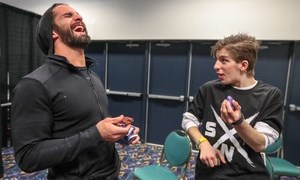 1. Dillon DeBoer, Illinois, US
1. Dillon DeBoer, Illinois, US
We have heard recently from Karyn DeBoer, mother of Dillon.
"Dillon is 18 and an only child. He started drooling just a little bit in 6th grade. He lost all of his speaking capabilities when he was 16. His gait was just fine until he was 14. It was just a bit off. This disease really started showing its true colors last year. Dillon has a lot of trouble eating. He can never eat alone, and he does not eat in public. We live in Warrenville, Illinois.
"Dillon was diagnosed by a neurologist at the Movement Disorder Clinic at Rush University Hospital in Chicago, Illinois. She gave Dillon his first round of Botox in his face for drooling about 3 weeks ago. It seems to help with the drooling.
"Dillon was the lucky recipient of a wish granted by the Granted Wish Foundation in Ohio. He was able to meet his hero Seth Rollins of WWE and deliver a painted rock good luck charm!"
2. Tracy Ghoris, Ohio
Tracy writes with this update, including news of a special fundraiser she's holding in July to benefit NA research:
"Eight months ago I moved in with my parents. After a fall, a neuro-physical therapist combined physical therapy with cognitive tasks; I find the metronome for cadence beneficial. While the symptoms of ataxia and Parkinsonism stiffness are more pronounced, I still enjoy walking at a nearby mall and use a shopping cart to help me navigate.
"My interests are art galleries, antique shops, church, parks, photography and music events and I also relish quiet time! I still get botox every three months along with the appropriate medications. I may be slowing down but still hanging in there!
"On July 13, 2019, I'm holding a Benefit Concert and Basket Raffle and all proceeds will go to the Advocacy for Neuroacanthocytosis for research. My friend Bill, an excellent pianist and vocalist who's performed on cruise ships for over 20 years, will be the performer.
"There are 112 seats in the Recital Hall, and I hope to fill all of them! I sent out invitations that also encouraged people to view the website naadvocacy.org. As well, I attached printed pages of "What is NA?" and "Support Us" to the invitations.
"Already, I've six RSVPs. A classmate of mine is donating one of her beautiful handmade baskets with items in it, and a dear friend of mine who cannot attend gave me a $25 donation for the fund. My mom is treasurer for this event. She has long-time experience being treasurer of a few organizations and was a bookkeeper before becoming a teacher."
Our thanks to Tracy for this news, and best of luck with the July event!
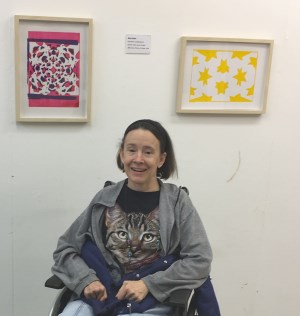 3. Alex Irvine, London, UK
3. Alex Irvine, London, UK
Alex has been fortunate to be invited to join an art group run by the local council for people in need of outside activity. She was able to work with an artist who helped them produce sculptures from recycled materials, then another who led them to create stencil paintings and finally a mosaics artist who provided more colourful tiles than you can imagine!
As a final effort they brought all their work together for an exhibit called “It’s all in the Journey” to celebrate the diversity of participants and their work. The organiser Isabella N. said "congratulations on such a great exhibition - your artwork looked fantastic. And thank you all for being such a great team - working with you to get the exhibition ready was such a pleasure, a definite highlight of my year so far.”
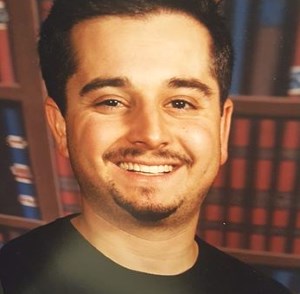 4. Mike Koutis, Calgary
4. Mike Koutis, Calgary
Mike writes often on Facebook and keeps us up to date with his activities, his thoughts and stories of his life at home and abroad. He writes, "I just wanted to tell all of my friends that I hope you are pursuing your passion. Life is too short not to be happy. I graduated from the University of Manitoba with my engineering degree and worked for a year but I wasn’t happy so I went back to school and after 2 more years I got my teaching degree.
"I loved teaching and after subbing for a year decided to go to England and teach there for a year. It was an amazing experience! I was not only working in my dream job, as a grade 3 Special Needs Teacher, but I was also living my life to the max.
"I went to Wimbledon and watched some of the greatest tennis players, visited Cambridge, spent a week visiting my aunt for the first time in Manchester, where I also got to watch a football match at Old Trafford Stadium and got to experience St.Patricks Day in Dublin. I also made many friends while in England, some of whom I still keep in touch with, including my very good friend Elizabeth.
"After my year in England I came back home, where I was able to continue my dream of teaching, this time as an Adult Educator. It was a great job as I not only got to teach but also develop my own curriculum. But I think the greatest thing to come out from this experience was that I got to teach a great guy whom I’m still friends with today. Brendan and his wife Kristy and their children Ray and Serena are like family now.
"I’m grateful for the life I have lived but I’m not ready to give up hope that a cure for NA will be found."
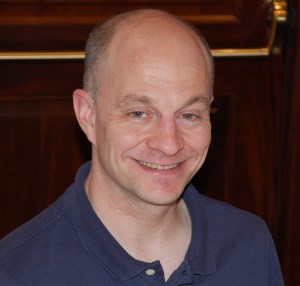 5. Bob Metzger, Minnesota
5. Bob Metzger, Minnesota
We were pleased to receive this update from Bob.
"I wanted to let you know about an adventure I'm undertaking this summer. I'm riding in this year's Bike MS, and would love your support in my fundraising efforts! This year's ride takes place June 8-9. I'm hoping to raise a minimum of $500.
"Pedaling a bike could be the answer to a world free of MS. Mile by mile, dollar by dollar, Bike MS provides much needed funding not only to research, but to ensuring people affected by MS can live their best lives. I have joined a team for this year's ride and I'd really appreciate your support.
"Click here to visit my personal page.
If the text above does not appear as a clickable link, you can visit the web address:
http://main.nationalmssociety.org/site/TR?px=17273181&pg=personal&fr_id=30190&et=YfgwluA9h6legPodFM_DDQ
"Thank you so much!"
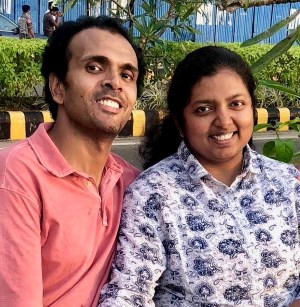 6. Shobith Thomas, US
6. Shobith Thomas, US
We were delighted to hear the following positive news from Simi, the wife of patient Shobith Thomas, who writes to us with this update about her husband:
"2018 was a great year for Shobith. Two major changes/events were his complete dental work and daily physical therapy. On top of that, he is benefitting from speech/swallowing therapy and Ayurveda these days.
"Shobith was having trouble keeping up his dental hygiene and in 2018 the decay progressed aggressively. His dental team here in the U.S. suggested anesthesia to correct the damage. Due to the potential side effects on someone with NA and also because he might lose his teeth, we looked for other options.
"I contacted Shobith’s dentist, Dr. Vinod Thamby, in India and we travelled there in September. Dr. Vinod and his team rearranged their schedules to accommodate Shobith for 4 or 5 hours every day for 2 weeks. Not only was Shobith willing to sit through the procedure, he was able to cooperate with all of the dentist’s requests without a lot of involuntary movements.
"Shobith showed such resilience that at the end of the day, his dentist was more exhausted than he was! Shobith came back with a perfect smile thanks to Dr. Vinod Thamby and his team. The dentist here in the U.S. was amazed at the amount and quality of the work they were able to do for Shobith in India.
"It used to be a struggle to make sure that Shobith brushed his teeth even once a day. But after this life changing event, Shobith insists that I brush and water floss his teeth every night before bed and he even does it by himself in the morning. Generally, it is difficult for Shobith to change his habits and this was a tremendous change. This was such a blessing and we are so happy that we made the decision to travel to India.
"Another big change for Shobith has been his attitude towards his therapies. Now he is doing at least half an hour of exercise as his daily routine, thanks to the therapist's constant encouragement and innovative ways of therapy. And I make sure that I follow up on his exercise every day.
"This is what Andrew has to say about Shobith’s improvement and his experience working with Shobith: 'Shobith has dedicated himself to being more safe and consistent with his movements as he works towards decreasing his falls and becoming more safely independent. Along with taking his exercise program seriously, he more frequently follows the mantra of "pretend I'm in a PT session," when doing things like sitting safely or getting up to walk in the house, instead of throwing himself onto (or through) chairs and across the room unsafely.'
I believe Andrew’s ability to greatly appreciate Shobith for everything he does was the key to this attitude change and Shobith enjoys all of his fun-filled therapy sessions. Andrew also comes up with more new therapy techniques as he becomes more familiar with Shobith’s movements/habits and it is definitely helping him to be more stable, strong and safe. We feel greatly blessed to have found Andrew as Shobith’s therapist.
"Shobith has also been doing his speech and swallowing therapy for the last 3 months. Overall, therapy has become his focus these days. When we went to India, we also started an Ayurvedic treatment for Shobith. Over the last few months I feel it has helped him to have better sleep and mood. So, we are continuing this treatment which has been so beneficial to Shobith’s well-being.
"Shobith has also been going to the sheltered employment program for the disabled every day. His routine is now packed with Church in the morning, therapies before noon, working in the afternoon and outings in the evenings. With all these positive changes, even his involuntary movements have decreased. He is calmer and happier these days.